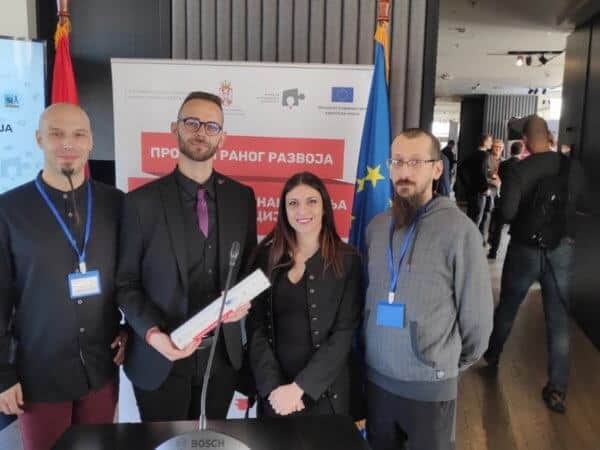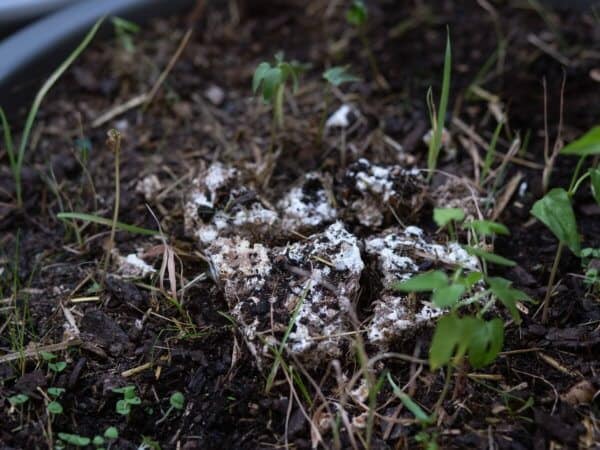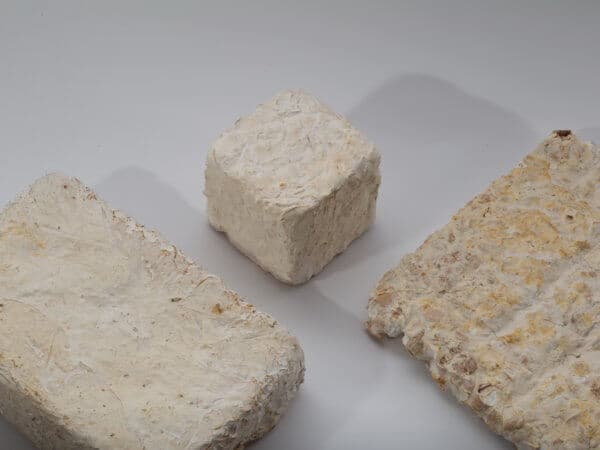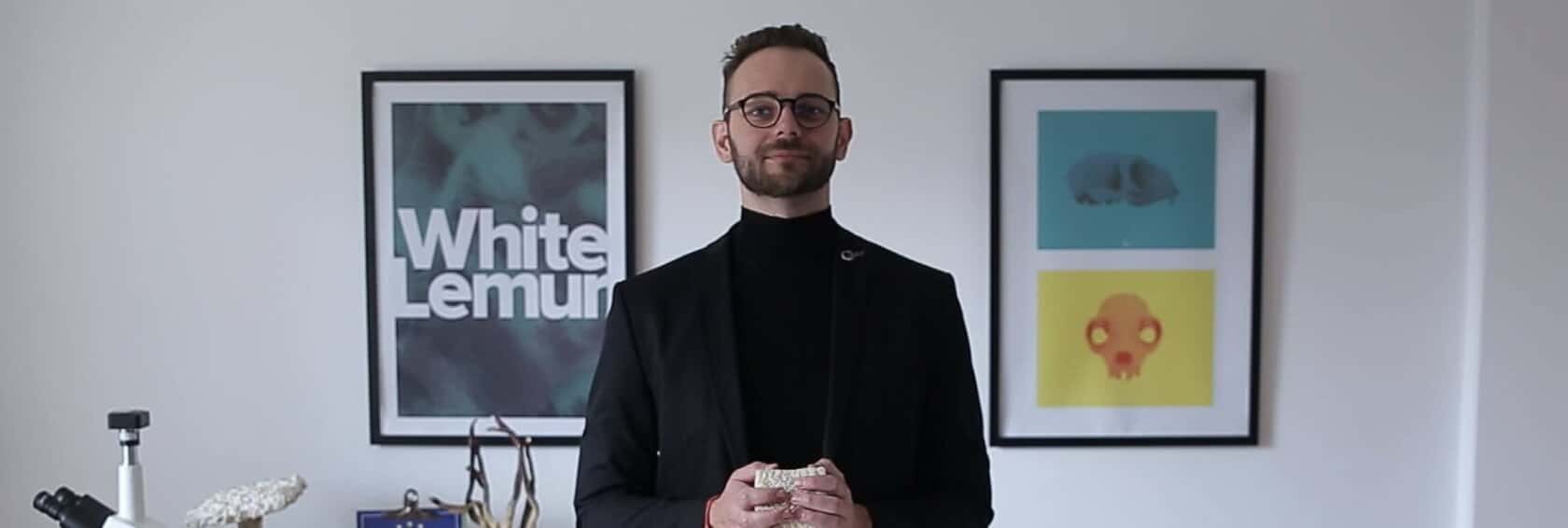How could a fungi be seen as the key for the future of eradicating pollution? Well one man thinks he has the answer with biosporin.
The superstar of today’s story is a mushroom called Ganoderma and general manager of a company White Lemur that produced the best technological innovation 2020 crushing its 142 competitors – Biosporin.
Nikola Stanojevic and his team have invented a new type of biodegradable material made of specific sort of fungi, that will completely replace the harmful styrofoam we use on a daily basis.
And they did all of that by cloning a mushroom taken from the forests of Serbia turning it into an eco version of styrofoam, called – biosporin. This material is made entirely from agricultural waste, generates no waste water and uses 98% less energy than polystyrene production.
When it bio-degrades all it leaves is organic salts which can be used as a partial organic fertilizer. One tone of biosporin reduces CO2 in the atmosphere by 8.9 tons!
The best part? Mushroom used for biosporin is a great ingredient for making new materials and its different versions can serve as active compounds for producing health supplements.
Young Innovation
What is taking most of your time at the moment?
If I’m being honest, its difficult to pin down one thing that takes most of my time. I’m involved in or managing multiple projects, so jumping on and off each of them takes a chunk of my time.
I’d say at the moment, most of my focus around the different companies and projects I’m involved with is on market penetration, that seems to be the theme right now.
You are creating innovations that are about to change the world around us for better (in regards to ecological benefits). However, none of this would become reality if you were not into molecular biology. What has drawn you to this type of science?
I’ve always been interested in life sciences, since childhood. Life has always fascinated me, so it somehow was never a question whether I will end up studying something in that line. However, I never chose to go down the “scientist” career path.
Rather, in my student days I realised I’m far more interested in innovation and using scientific knowledge to create new technologies and products.
You and the team of your company White Lemur have been rewarded for the best technological innovation 2020 in Serbia. You developed a material called biosporin – eco version of styrofoam, very harmful for our environment. Instead of emitting CO2 biosporin can be beneficial for nature. Can you explain how?
Biosporin is an ecological, biodegradable and sustainable substitute for expanded polystyrene. It is made entirely from agricultural waste, and it is “produced” in an organic way with the help of special kinds of mushrooms, generating no waste water and using 98% less energy than polystyrene production.
When it bio-degrades it leaves behind only organic salts which can be used as a partial organic fertilizer. Biosporin reduces pollution in a number of ways, ranging from its production to its final fate.
It also has a number of cascade and circular uses designed into it, allowing us to reuse parts of it again and again.
So, if we analyse from cradle to waste, in total, one tone of biosporin that replaces one tone of polystyrene on the market reduces CO2 in the atmosphere by 8.9 tons, methane by about three tons, solid plastic waste by about 300 kg and ashes and dust by 150kg.
Building A Project
A bunch of extraordinary people have been involved in this project, including teams of biologists, agricultural experts, managers and financial advisers. Can you tell us more about the steps of the whole project Biodegradable styrofoam biosporin ?
Well, the project started very spontaneously. We were actually growing and producing a special kind of mushrooms to make pharmaceutical products. We developed a product called IMUNIN, which we still make, and realized that, something that was at the time a waste stream, could have traits similar to expanded polystyrene.

At the same time, we noticed that there was a considerable spike in interest in biodegradable and ecological packaging. So we started to explore that avenue, and experiment with the material.
We had a pretty ‘conventional’ development track from there, producing first lab-based prototypes, experimenting with the material and production, and eventually developing at-scale production methods, all the while working on the product and commercial aspects of it all.
Since we are a rather small team (there’s only four of us in the founding team), we got a lot of outside help from different experts from several institutions at times we needed it.
What was the most challenging part of it?
Difficult to pick just one out. All of the aspects of innovation development are challenging in their own way. I would say, setting the technical challenges aside, that the other big area we struggled with is the legal and certification positioning of our new material.
Since it technically does not exist yet, its very difficult to get some official stuff for it, like certificates and registrations.
Fungi Focus
The superstar of your innovation is a specific type of fungi. Can you reveal more on the production process and the role of this fungus?
As I explained earlier, we use a special kind of fungus to produce both our innovative material Biosporin as well as our health and wellness product, IMUNIN. It’s a special strain of the mushroom Ganoderma that we’ve selected and cloned in our lab.

The original sample came from the forests of Serbia, but it was adapted in our lab for our purposes.
So now we use this mushroom in different ways, by changing the growing conditions and metabolic parameters, we can make it either produce mycelial structures like materials, or it can make mushrooms that contain pharmaceutically active compounds we then use to make health supplements.
What are the greatest benefits of biosporin?
In addition to being completely biodegradable, and all the ecological advantages I pointed out earlier, another important advantage is that it is completely inflammable. It has been certified as A0 flammability class, meaning it never catches on fire.

It starts combusting at around 400 degrees and turns to ash at about 1,000.
Once this incredible discovery is put to commercial use, which industries will be able to benefit from it?
There is a wide potential for application of this material, and we get new inquiries almost daily, which people asking about potential applications we didn’t even think about before.
However, our primary goal is to push for usage in the single-use packaging industry, because that’s where most of the pollution with microplastics comes from.
All In This Together
What would be your message to all ecologically irresponsible people, not aware of the potential danger of the damaging materials we use on a daily basis?
It’s easy to forget, in the middle of a global pandemic, that we were in a pretty bad crisis before Covid-19.
Pollution kills more people annually than Covid-19 at the moment, and it’s not going anywhere. Moreover, it only got worse.
You can’t vaccinate against it, you can’t isolate from it, it’s all around us and inside us at every moment.
The many creative and ingenious solutions that emerged to help handle Covid-19 are an excellent illustration of what we can do when we have a sense of urgency. Innovation is the only viable way to solve the environmental problems we are facing.
So, be creative and be aware of the urgency to invent new solutions.
Photo credits: SOMA
Take a look at another inspirational figure, doing their best to help change the world for the better.
Tackling Youth Unemployment in South Africa: An interview with Luthando Kolwapi
Support us!
All your donations will be used to pay the magazine’s journalists and to support the ongoing costs of maintaining the site.
Share this post
Interested in co-operating with us?
We are open to co-operation from writers and businesses alike. You can reach us on our email at [email protected]/[email protected] and we will get back to you as quick as we can.










